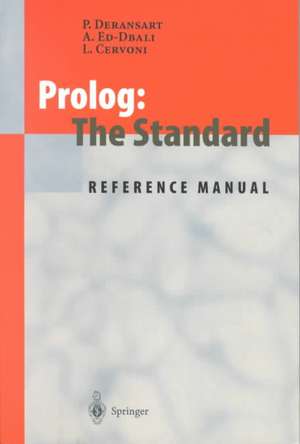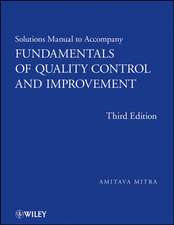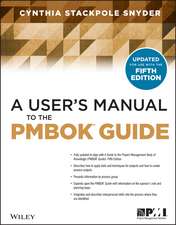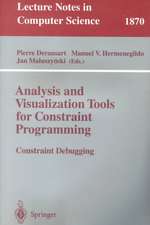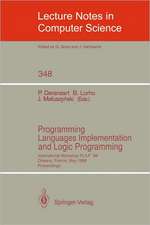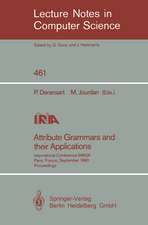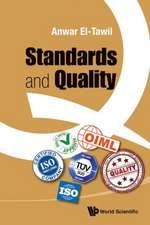Prolog: The Standard: Reference Manual
Autor Pierre Deransart Cuvânt înainte de C. Biro Prefață de R.S. Scowen Autor AbdelAli Ed-Dbali, Laurent Cervonien Limba Engleză Paperback – 15 apr 1996
Preț: 703.38 lei
Preț vechi: 879.23 lei
-20% Nou
Puncte Express: 1055
Preț estimativ în valută:
134.61€ • 140.01$ • 111.13£
134.61€ • 140.01$ • 111.13£
Carte tipărită la comandă
Livrare economică 14-28 aprilie
Preluare comenzi: 021 569.72.76
Specificații
ISBN-13: 9783540593041
ISBN-10: 3540593047
Pagini: 292
Ilustrații: XVI, 272 p.
Dimensiuni: 155 x 235 x 15 mm
Greutate: 0.45 kg
Ediția:Softcover reprint of the original 1st ed. 1996
Editura: Springer Berlin, Heidelberg
Colecția Springer
Locul publicării:Berlin, Heidelberg, Germany
ISBN-10: 3540593047
Pagini: 292
Ilustrații: XVI, 272 p.
Dimensiuni: 155 x 235 x 15 mm
Greutate: 0.45 kg
Ediția:Softcover reprint of the original 1st ed. 1996
Editura: Springer Berlin, Heidelberg
Colecția Springer
Locul publicării:Berlin, Heidelberg, Germany
Public țintă
Professional/practitionerCuprins
1. Introduction.- 2. Prolog Data Structures.- 2.1 Terms.- 2.2 Some particular terms.- 3. Prolog Unification.- 3.1 Substitutions.- 3.2 Unifiers.- 3.3 The definition of the unification in Standard Prolog.- 4. Prolog Execution Model.- 4.1 Database and environment.- 4.2 The execution model for definite Prolog.- 4.3 The execution model for Standard Prolog.- 4.4 Additional error situations.- 4.5 The side-effects of cut.- 5. The Built-in Predicates.- 5.1 Presentation.- 5.2 Templates.- 5.3 The built-in predicates.- 6. Prolog Arithmetic.- 6.1 Arithmetic expressions.- 6.2 Expression evaluation.- 7. Prolog Environment: Sources and Sinks.- 7.1 Overview.- 7.2 Streams in Standard Prolog.- 7.3 Properties of the streams.- 7.4 Inputting and outputting terms.- 8. Prolog Flags and Directives.- 8.1 Unchangeable flags.- 8.2 Changeable flags.- 8.3 Directives for initialising flags and tables.- 8.4 Directives for preparation of Prolog texts and goals.- 9. Prolog Syntax.- 9.1 Character sets and character conversion table.- 9.2 Expression and operator table.- 9.3 Presentation of the syntax.- 9.4 Syntax of Prolog text.- 9.5 Syntax of read-term.- 9.6 Syntax errors.- 10. Writing Portable Programs.- 10.1 Unification.- 10.2 The database update view.- 11. Annexes.- 11.1 Compliance.- 11.2 The ftp package.- 11.3 Elements of lexical analysis.- 11.4 ASCII table.- 11.5 Glossary of auxiliary concepts.- Thematic classification of the built-in predicates.
Textul de pe ultima copertă
This is the first reference manual on the ISO international standard of the programming language Prolog. Prolog was the first logic programming language and is used in many areas in industry, such as computer aided design and manufacturing, software engineering, multimedia and documentation, AI systems and databases (expert systems, knowledge bases, man-machine interfaces, natural language analysis), and application fields like transportation, telecommunications, and banking. Moreover, it is the kernel language of many emerging logic programming languages which support constraints, functions and concurrency.
The book gives a comprehensible full description of the standardized language together with an executable specification. It enables system developers, application programmers and Prolog users to work with any standard conforming processor.
The book gives a comprehensible full description of the standardized language together with an executable specification. It enables system developers, application programmers and Prolog users to work with any standard conforming processor.
